June 2022 - You are accessing an old version of our website. The SDGs Voluntary Commitments have been migrated here: https://sdgs.un.org/partnerships
You will be redirected to the new Partnership Platform in 10 seconds.
June 2022 - You are accessing an old version of our website. The SDGs Voluntary Commitments have been migrated here: https://sdgs.un.org/partnerships
You will be redirected to the new Partnership Platform in 10 seconds.
The measurement of the City Prosperity Index (CPI) in Mexico, carried out between 2015 and 2019, pursued the objective of creating accurate knowledge of the prosperity conditions of Mexican cities, while delivering tools to local governments for analyzing, planning and monitoring urban policies geared towards the implementation of the Agenda 2030 for Sustainable Development.
The project was part of the strategic cooperation between Infonavit and UN-Habitat Mexico Office, comprising two phases:
Phase 1: measurement of 153 municipalities
Phase 2: measurement of 152 municipalities including the ‘Extended CPI’ versions for the urban agglomerations of Mexico City, Guadalajara and Monterrey. Additionally, was developed the Urban Prosperity National Report 2019, based on the results and key findings of both phases
Infonavit, the largest social mortgage institution in Latin America, with the UN-Habitat´s support, implemented a national strategy to generate evidence for evaluating, monitoring and following-up on the prosperity of the country's cities and the impact of public policies and government actions for achieving the 2030 Agenda and SDG. This strategy was based on the City Prosperity Index (CPI) developed by UN-Habitat.
Due to the lack of mechanisms to analyze, compare and measure city conditions with reliable data, the measurement of the CPI contemplated the creation of a comprehensive system to monitor the urban prosperity of Mexican cities and the impact of public policies. The project developed a metric that provides statistic evidence for facilitating political dialogue and accountability, identifying challenges and opportunities for cities in Mexico, and supporting evidence-based decision-making for local and regional governments. Such measurement allowed monitoring government efforts towards the implementation of the Agenda 2030 and the commitments of the New Urban Agenda.
In order to apply the formulas and benchmarks defined by the City Prosperity Initiative methodology into the Mexican context, it was necessary to develop a series of methodological innovations:
1. Definition of urban agglomerations. In Mexico, the information needed to build the CPI indicators is generated primarily at the municipal, state and federal levels. However, political-administrative boundaries do not necessarily coincide with the extents of cities and human settlements, jeopardizing the accuracy of the information. Therefore, it was decided to define the territorial extent of urban agglomerations from a morphological perspective to subsequently couple the available information generated at different administrative levels. This was carried out in-office through telemetry and satellite detection.
2. For the development of spatial indicators, such as Green Area per Capita and Accessibility to Open Public Areas, the information was exhaustively verified in each municipality, going beyond the existing categories and definitions and in close cooperation with institutions.
The project culminated with the publication of a series of reports, including 305 Basic CPI municipal reports, 2 Urban Prosperity National Reports (2015 y 2019) -the last one represents a proposal to develop a national urban policy in Mexico- and 3 Extended CPI reports for the urban agglomerations of Mexico City, Guadalajara and Monterrey. The extended version of the CPI integrated 22 additional indicators in comparison with the basic version, and its scope went beyond global comparability, seeking to shed light into specific challenges and opportunities for urban contexts. Additionally, the extended version included a higher percentage of territorial indicators, which allowed a deeper understanding of the effects of public policies.
Primarily, the reports produced in the context of this project aim at the fulfillment of the SDG 11 (Make cities and human settlements inclusive, safe, resilient and sustainable) by providing a comprehensive set of specific policy recommendations for the totality of the computed cities. Such recommendations coming from the CPI are also aligned to other SDGs, such as: 1 No poverty, 3 Good health and well-being, 5 Gender equality, 6 Clean water and sanitation, 10 Reduced inequalities, 12 Responsible consumption and production, 13 Climate action and 17 Partnerships for the goals.
The project was implemented by Infonavit in partnership with the UN-Habitat. This relationship was essential to ensure the project implementation with the support of the Infonavit´s Sustainable Development Research Center, which periodically reviewed progress and outcomes.
The Secretariat of Agrarian, Territorial and Urban Development (SEDATU) and National Housing Commission (CONAVI) were important drivers to develop the conceptual framework for the methodological adaptation of the CPI to the Mexican context. The Institute of Statistics (INEGI) and the National Population Council (CONAPO) facilized information to develop indicators to measure some urban indicators.
Municipalities provided information and feedback about specific indicators.
The measurement of the CPI index in Mexico was executed in different steps:
Database collection and calculation of indicators. Research and investigation on numerous official databases according to the methodological standards of UN-Habitat. To this is added the definition of 162 urban agglomerations through mapping and analysis, comprising 467 municipalities and the adaptation of CPI indicators in the Mexican context in close collaboration with external and internal peer-reviewers.
Validation of results. After obtaining the CPI results for the totality of the municipalities, a process for validating the results was carried out with local governments to ensure the accuracy of information, and as a potential starting point for future cooperation. The validation consisted in communicating the CPI results to the technical body of local governments, and receive their feedback regarding their perceived challenges, proposals and general comments generated by the CPI measurement. Following this process, certain indicators were updated and refined thanks to the inputs of authorities.
Publication of CPI reports. After processing the validation and updates of the results, a series of CPI reports were elaborated, consisting of:
- 305 Basic CPI reports that collect the indicator results for each of the municipalities. Including contextual analyses, exemplary cases of projects, public policy recommendations based on the results and integration of the feedbacks of contacted municipalities.
- 2 Urban Prosperity National Reports (2015 y 2019) that present the main key findings and a proposal to develop a national urban policy in Mexico.
- 3 Extended CPI reports for the urban agglomerations of Querétaro, Mérida and Zapopan at the first phase, and 3 Extended CPI reports for the main urban agglomerations of Mexico City, Guadalajara and Monterrey at the second phase of the measurement. Such reports include contextual and integrated analyses, public policy recommendations, and results of three participative workshops held in each of the cities of phase 2.
Metropolitan workshops. As part of the validation process for the phase 2 Extended CPI reports, three participative workshops were held in Mexico City, Guadalajara and Monterrey. By gathering a plurality of metropolitan actors coming from academia, government institutions, civil society and the general public, the workshops consisted in mapping exercises coupled with the definition of urban strategies. The objective of the workshops was to present and socialize the preliminary results of the CPI, and to identify key problematics and opportunities for sustainable development in each of the urban agglomerations.
Outputs:
- Numeric results of 40 indicators regarding 6 dimensions of urban prosperity: Productivity, Infrastructure for Development, Quality of Life, Equity and Social Inclusion, Environmental Sustainability and Governance and Legislation for 305 municipalities.
- Policy recommendations for 162 urban agglomerations, which in total cover more than 90% of the urban population in Mexico
- Statistic correlations analysis
- Design of methodology for building 22 extended CPI indicators
In an effort to go beyond the already rich metric of the CPI, the reports included policy recommendations in the form of a roadmap for decision makers. The recommendations sheets included the time-frame of the proposals (short, medium, long terms), the political-administrative level of implementation (Municipal, State or Federal), the necessary actors and stakeholder’s involvement (public institutions, NGOs), a series of strategic lines of action and exemplary cases relevant to the proposed strategies. Furthermore, such recommendations were conceptualized for and respond to a variety of SDG goals and targets, which were clearly indicated in each recommendation sheet, thus contributing to governments efforts in implementing the Agenda 2030 and the New Urban Agenda pledges.
In sum, the reports produced, through the measurement process itself, information and a deep understanding of the current state of the most urban settlements in Mexico. Now this information is available to practitioners, decision makers and the general public. This database will allow the monitoring of public policies towards the Agenda 2030, identify priorities for each of the urban agglomerations, and encourages a systemic approach to the management and planning of the cities.
The main impacts so far have to do with the adoption of the produced CPI measurement into public plans, policies and strategies of various municipal governments such as:
- Estrategia Territorial de Zapopan 2030: A territorial strategy elaborated in 2017 by the municipal government of Zapopan in cooperation with UN-Habitat Mexico that applies the tools, inputs and recommendations of the CPI database, and aligns the official municipal plans to the Agenda 2030.
- Plan Parcial de Incorporación Territorial “Parque Ecológico Quetzalcóatl”: A territorial plan encompassing the planning of an ecological park in the municipality of Naucalpan de Juárez in the State of Mexico. Its diagnosis is based on the CPI indicators produced.
- Municipal Development Plan of Naucalpan de Juárez 2016-2018: The objectives of the three-year plan are based on the opportunity areas identified through the CPI report.
- Government Program 2019-2020. Municipality of Azcapotzalco, Mexico City: The new government program makes explicit reference to the information and recommendations of the CPI report.
The implementation of the CPI in Mexico inserts itself as part of the strategic cooperation between Infonavit and UN-Habitat, and as such, a frequent communication and interchange during the measurement process proved to be essential for the successful completion of the project. The core team that developed the database counted with the support of the Sustainable Development Research Center of Infonavit.
The technical difficulties in the implementation of the project were related to the lack of official information disaggregation, presentation, validity, homogeneity and temporality of the data regarding the socio-spatial phenomena in the country. The methodological adaptation of the CPI in Mexico implied the research and analysis of all indicator variables in order to reflect the global comparability standards stablished by UN-Habitat. Despite government efforts towards transparency of information, this endeavor proved difficult in a context where urban data is extremely fragmented and not always available, thus, it required accurate and critical work to capture and filter information.
A core team integrated by more than fifteen professionals with backgrounds in economics, geography, statistical analysis, urbanism and architecture generated a methodology to research, capture and homologate the necessary data for building the CPI indicators. It is worth highlighting that the process of indicator calculous for the Extended CPI version is pioneer in the region, so this exercise laid the basis for future calculations in the Latin American context.
The project counted also with the collaboration of various planning institutes across the country, for example the IMPLAN in Querétaro, the State of Jalisco’s IMEPLAN, the municipality of Mérida, to mention some, which played a key role for the project success. On the other hand, the Mexican political context derived from the change of government at federal level could mean a challenge for the massive diffusion of this component, at least while the transition process bases its foundations.
The active and coordinated participation of various sectors propitiate institutional and financial sustainability of this project. Sustainability is reinforced by the active participation of other social and private sectors such as universities and research centers that also participate with in-kind resources and make this project an inter-institutional success that is more likely become a monitoring mechanism that will have long term sustainability.
Participatory processes, at the local level, to validate CPI indicators and methodology was a key element to improve information quality and for analyzing the intra-urban dynamics in the largest urban agglomeration of the country. Various other cities are adapting and further developing this methodology for the monitoring and evaluation of their own policies. This represents a clear transferability of the process that has also been extended to other cities and countries in the world.
Socializing information and creating open channels of participation was central to the development of this component. The project was clearly shown that when there are clear channels of participation, the possibility of a more general acceptance of the proposals that emanate from it and the approval of the lines of action is greater.
The success of this project was verified, in first instance, by the replicability of the operation in a second phase that includes a number of 152 municipalities and three extended report for main agglomerations. The transfer at the institutional level is also clearly measured by the adoption of the CPI by several states of the Republic, such as Mérida, Jalisco and Sinaloa, among others, as their monitoring system. The large number of cities that have adapted and developed the monitoring and tracking system shows the high-grade transfer of this project.
In the future, Infonavit and UN-Habitat pretend implement a periodic measurement of the state of prosperity for the 305 municipalities evaluated in order to monitor the progress of Mexican cities in the fulfillment of the 2030 Agenda for Sustainable Development. This measure will be applying in 2021, 2024, 2027 and finally in 2030.
The presentation of the methodology, scope and results of the project in various forums such as the Thematic Meeting "Financing Urban Development: The Millennium Challenge" in Mexico City; The Regional Meeting of Habitat III Latin America and the Caribbean in the City of Toluca, the meeting of the Preparatory Committee (PrepCom-3) of Habitat III in Surabaya, Indonesia and the Habitat Conference in Quito confirm the demonstrative effects of the project, and may generate significant transfers to other countries and institutions.
The implementation of the City Prosperity Index (CPI) in Mexico was an unprecedented exercise in metrics and analysis of the state of Mexican cities, which gathers ¬¬-in a single database- official information generated by a multitude of fragmented and poorly coordinated institutions and providing easily-available information to decision-makers and the general public. It was the first exercise of this scope and scale in the continent and its influence and relevance in public policy contribute to the fulfilment of several SDG targets and goals.
The obtained results underlined that prosperity is not tied to the size of cities. Cities do not have to be too big to aspire to be more prosperous; on the other hand, prosperity is derived from clear and forceful actions and requires the development of capacities at the local level, such as those that this project puts into practice.
The monitoring system produced a critical mass of information necessary for decision making. The project clearly showed that decision-making must be based on scientific evidence, which has the power to define the most important actions to be undertaken.
Urban prosperity is multidimensional. The balance between the 6 dimensions of prosperity affecting the most harmonious growth and jeopardizing the sustainability of cities. The form of the city, planning, urban design and structure of the city are elements that can play for or against shared prosperity and sustainability.
The articulation of the different levels of government and their associates are critical for the prosperity of urban centers. The study showed clearly that prosperity cannot be achieved in isolation, and the concurrence of levels of government is fundamental in this process.
Finally, the analysis of policies and actions that work and the elements that integrate them are a central element of prosperity. Currently, various local governments in Mexico have elaborated its urban development plans and other strategies by drawing upon the information, indicators and policy recommendations developed in this project. Therefore, the impact of this initiative is recognizable first through the policies and strategies that are putted in place by local governments, and on the coming outcomes in terms of sustainable development.
The conclusions and recommendations emanating from these studies are fully in line with the guidelines of the New Urban Agenda and respond to several of the thematic axes of the Sustainable Development Objectives (SDG) in cities.
CPI national results for Mexico: https://onuhabitat.org.mx/index.php/herramientas/cpi
Metropolitan workshops for Extended CPI
Mexico City
https://www.youtube.com/watch?v=54ts4xE71cA
Guadalajara
http://onuhabitat.org.mx/index.php/taller-cpi-del-area-metropolitana-de-guadalajara
Monterrey
https://onuhabitat.org.mx/index.php/taller-cpi-extendido-en-monterrey
Other impacts and good practices
Estrategia Territorial de Zapopan 2030
https://www.zapopan.gob.mx/estrategia-territorial-para-la-prosperidad-zapopan-2030/
Plan Parcial de Incorporación Territorial “Parque Ecológico Quetzalcóatl”
http://seduv.edomexico.gob.mx/dgau/planes_parciales/quetzal/PPITQuetza.pdf
Government Program 2019-2020. Municipality of Azcapotzalco, Mexico City
http://azcapotzalco.cdmx.gob.mx/wp-content/uploads/2019/02/programa-de-gobierno.pdf


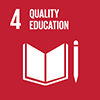
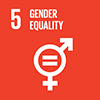
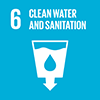
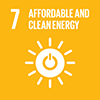

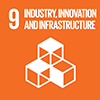
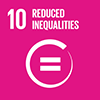



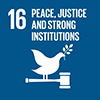
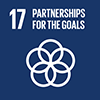
 Start: 01 August, 2017
Start: 01 August, 2017 Completion: 01 November, 2018
Completion: 01 November, 2018